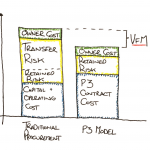The use of common and public-property resources is inherently problematic because very few economic costs exist for overuse. They produce market failures because there are no incentives for users to pay to avoid environmental degradation. This ownership incurs externalities that go un-priced, includes government subsidies that hold prices below the market value, and barriers to market signals that distorts information to consumers. In order to embark on the route to sustainability these issues must be addressed, but by who?
Individual Agents
Environmentalism is an ever evolving concept, it is collective action rooted in individual ideology. It is an action with intent to understand the human condition and to change the way we relate to our environment, but also an ideology or set of beliefs about our ability to improve the social-environmental relationship. Many forms of environmentalism develop strong ideologies, but are unable to develop clear political vision to turn these ideologies into action to create a more sustainable society. For this reason, these forms of environmentalism can become politically naive and potentially irrelevant (Harper & Fletcher 2008).
Environmental groups all have limitations in varying aspects, but what they lack is an overriding “metanarrative, or master-frame that could enable the varieties of environmentalism to work in complementary fashion, rather than in contradictory ways that blunt the effectiveness of the larger movement” (Harper & Fletcher 2008).
Structures
Economic markets have emerged as the primary tool for allocating limited resources; they rely on the interaction between supply and demand to determine the economic value of goods and services but ignore the social and environmental value of those same items. Neoclassical economic theory views free and fully functioning markets as the solution to economic and societal problems. This does not however, translate well to real world issues.
Markets are not a standalone solution because they are structurally flawed; they continually fail to effectively price goods and services and they create inefficiencies. None of the top-down structural models to date offer a complete fix to the problems, and all have tradeoffs between ease of implementation and effectiveness. The solution to socio-environmental problems may lie in the utilization of the tools of market incentives and in public policy. Ecological modernization is one response to these limitations which works to re-tool society and economy to better align them with environmental & social objectives, without compromising the functionality of the institutions of society.
Agency
There are several sociological perspectives that look at the prospects of a transition toward sustainability. Functional theory looks at the way society is shaped by the activities required for the survival of the social system, conflict theory views society as shaped by conflict among groups as they compete for limited resources, and interpretive theory (including symbolic interaction and social constructionist theory) argues that social interactions maintain and modify culture to induce social change (Harper & Fletcher 2008). While the first two perspectives focus on macro interactions of structures, the interpretive perspective rests on a foundation of human interaction and agency.
Based on the first two perspectives, a simplistic model of the framework of agency in society can be created, involving two levels of social reality: individual agents, and structures. The structures have potential to motivate change, but the individual agents act to produce change (Harper & Fletcher 2008).
A second model can be drawn to look at a missing level of reality, an area where the two levels interface – agency. This human agency is constrained from above by structural limitations, but also from below by the knowledge and abilities of individual agents that work within the structures (Sztompka 1993). Through this interplay of agency, practical and real outcomes of interaction and change take place – praxis. Praxis is the union of the operations of structures and actions of agents. It symbolizes the evolving nature of the social world and the myriad of possibilities for transformation (Harper & Fletcher 2008).
Using this rationale, the interdependence of the two levels of social reality is revealed. Individual agents lack the ability to mobilize action, and structures are internally flawed through the restrictions of market-based capitalism. Therefore, the greatest potential for developing a sustainable society and economy rests in the union of the two levels, wherein individual agents can incorporate their ideologies into the structures of which they operate or cooperate with, which will then allow them to overcome their previous barriers to effective action.
Literature Cited
Harper, C., & Fletcher, T. (2008). Environment and society: Human perspectives on environmental issues (Canadian ed.). Pearson Canada Inc., Toronto, ON, Canada. Print.
Sztompka, P. (1993). The sociology of social change. Blackwell Publishers, Cambridge, MA, USA. Print.





